Over the past few weeks I’ve had the opportunity to assist with a plethora of different projects. Two of these projects are Gulf Watch Alaska and NaGISA. Gulf Watch Alaska aims to provide scientific data on the status of the marine environment since the Exxon Valdez oil spill and informs environmental management in the Gulf of Alaska (https://gulfwatchalaska.org/). Many groups have teamed up to collect data throughout the Gulf of Alaska, and the Konar group contributes to this effort by sampling in Kachemak Bay.
Our sampling consisted of surveys conducted on mussels, the low, mid, and high intertidal community, clams, and seagrass beds. We surveyed sites all across Kachemak Bay from the oceanic Port Graham at the base of the bay to the glacially influence estuarine site of Bear Cove at the head of the bay. This made for a week of experiencing the great variety of marine habitats in Kachemak Bay, learning various different sampling protocol, and sampling at many beautiful locations.
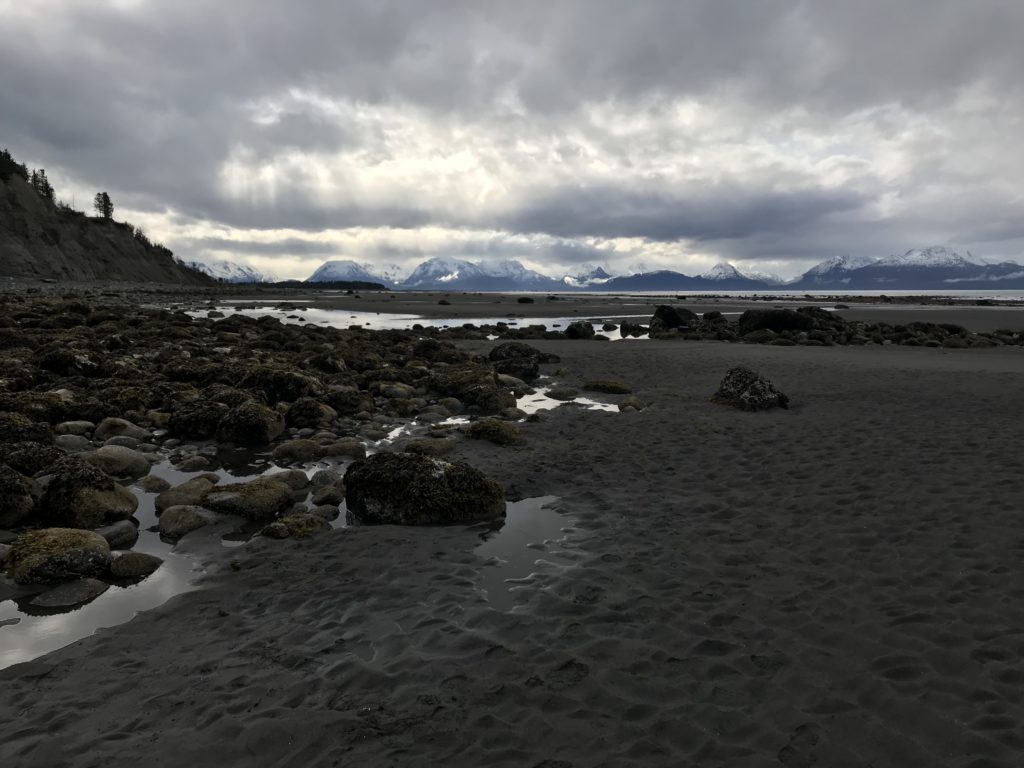
View from Bishops Beach rocky intertidal sampling site near Homer, AK.
While intertidal sampling meant time out of the water, it allowed me to gain a better understanding of rocky and soft intertidal ecosystems. Through percent cover surveys and sorting samples in the lab, I’ve become familiar with my intertidal algae and invertebrate species. It’s amazing how many different species of algae there are and how much the community can change throughout the intertidal zone.
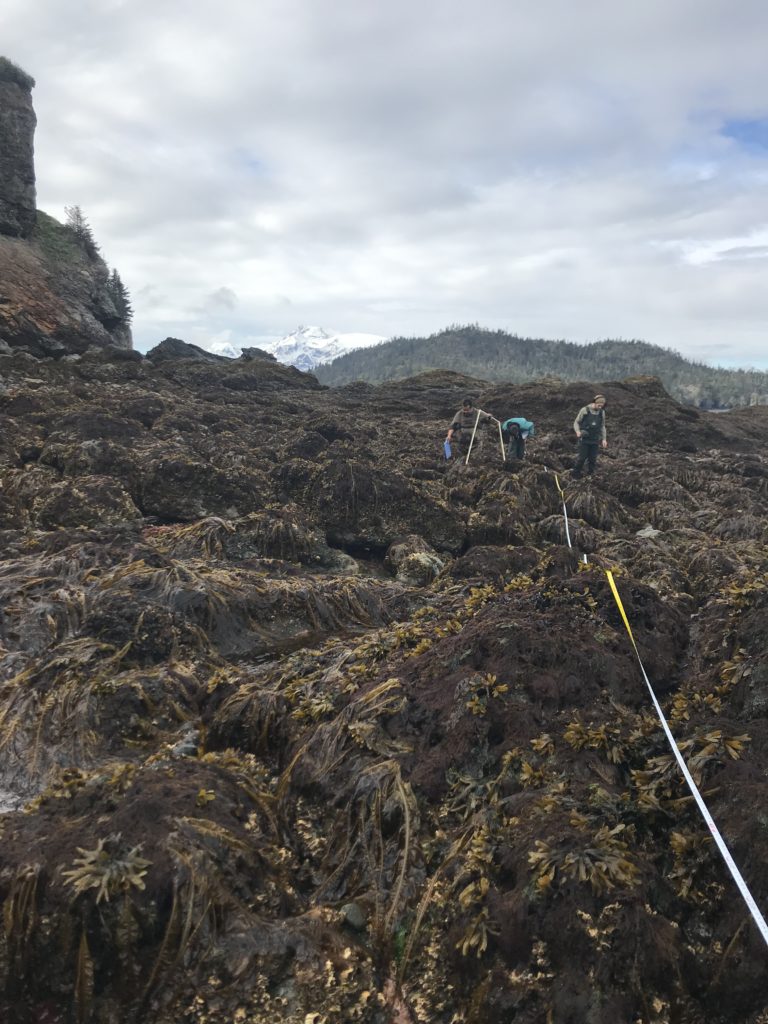
Rocky intertidal sampling for percent cover at Cohen Island.
The seagrass beds required trips to different sites since they are part of soft sediment habitats. Lucky for me, this meant more boat rides with fantastic views of Kachemak Bay. Not to mention the beauty of the sampling sites themselves! At the seagrass beds, we measured percent cover and the dimensions of the bed. Where the dimensions were far too large to be measured with a transect tape, we marked coordinates of the bounding corners. The seagrass bed at the site aptly named Mud Flat was so large that I made it out to the low tide mark; it felt like I was walking out to sea! I might have gotten a bit stuck in the mud, but that just meant more time to appreciate the seagrass and mountain views.
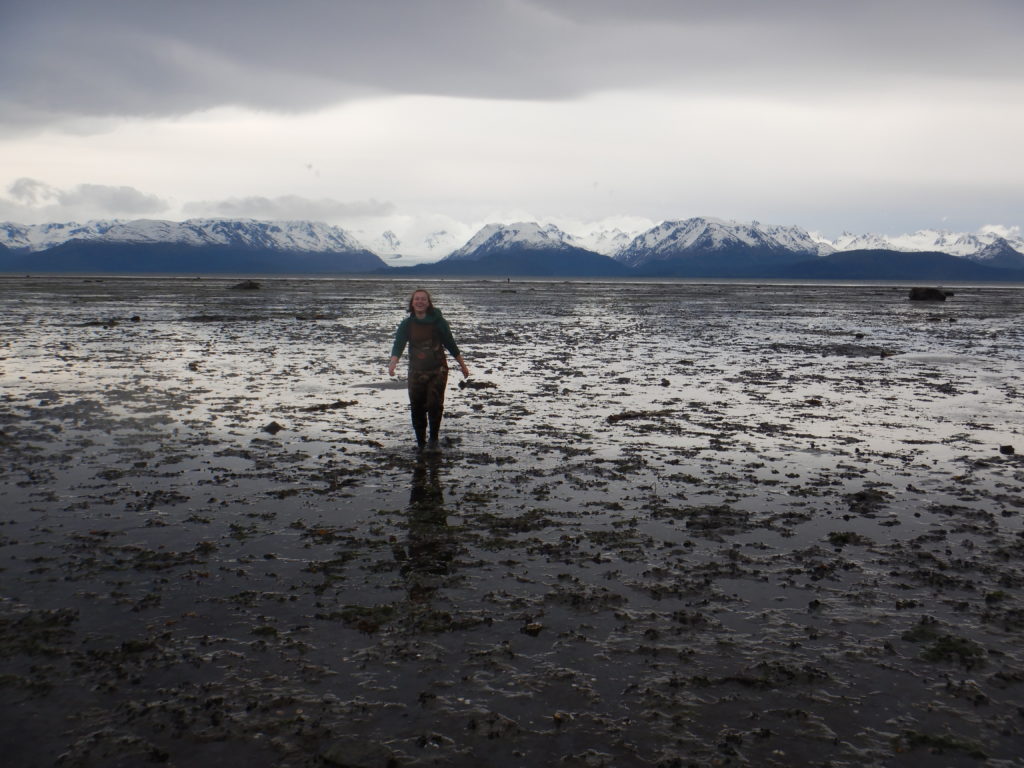
Coming back from measuring the seagrass bed width. Photo by Brenda Konar
With the efforts of a great team, we successfully completed the Gulf Watch Alaska sampling. The week was full of learning and fun with a big group of amazing individuals!
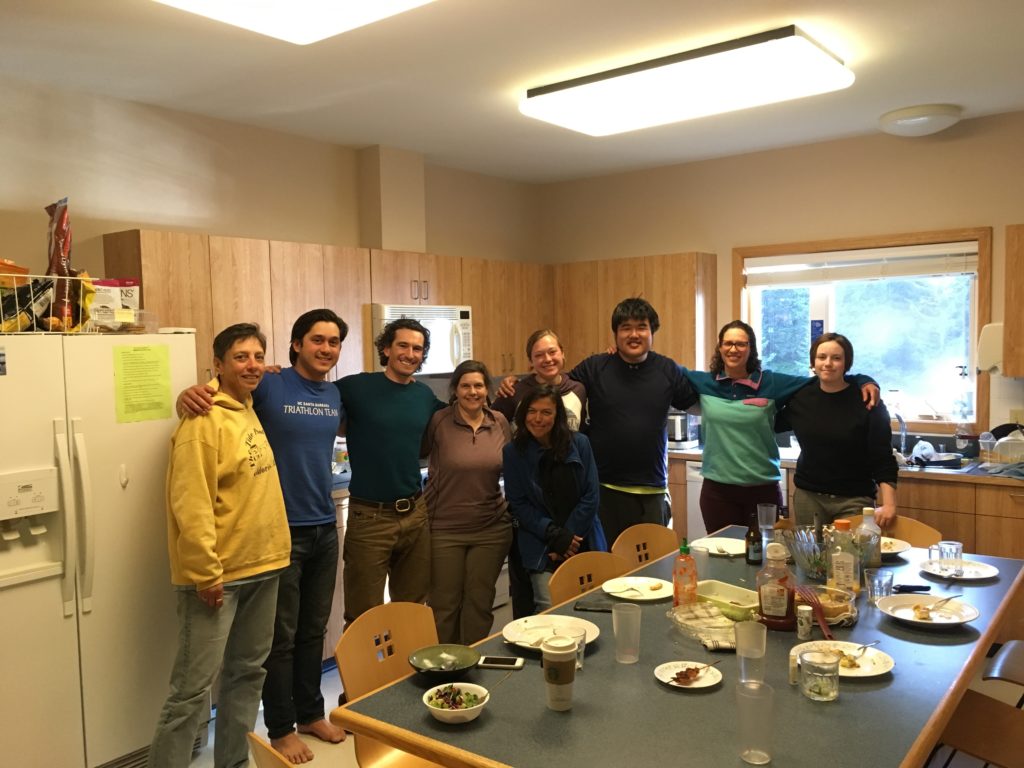
Gulf Watch Alaska 2019 Kachemak Bay team.
Now back to the water with NaGISA! NaGISA is the Natural Geography in Shore Areas project that aimed to measure biodiversity in near-shore habitats and how they change over time. From 2000-2010, this project was conducted across a longitudinal and latitudinal gradient to capture changes in biodiversity around the world. Although the project has ended, the Konar Lab continues to sample high latitude macroalgal habitats for long-term monitoring. This was an extremely exciting experience for me because I was able to dive my first kelp forest! Then I was able to dive another four kelp forests to make our five sampling sites.
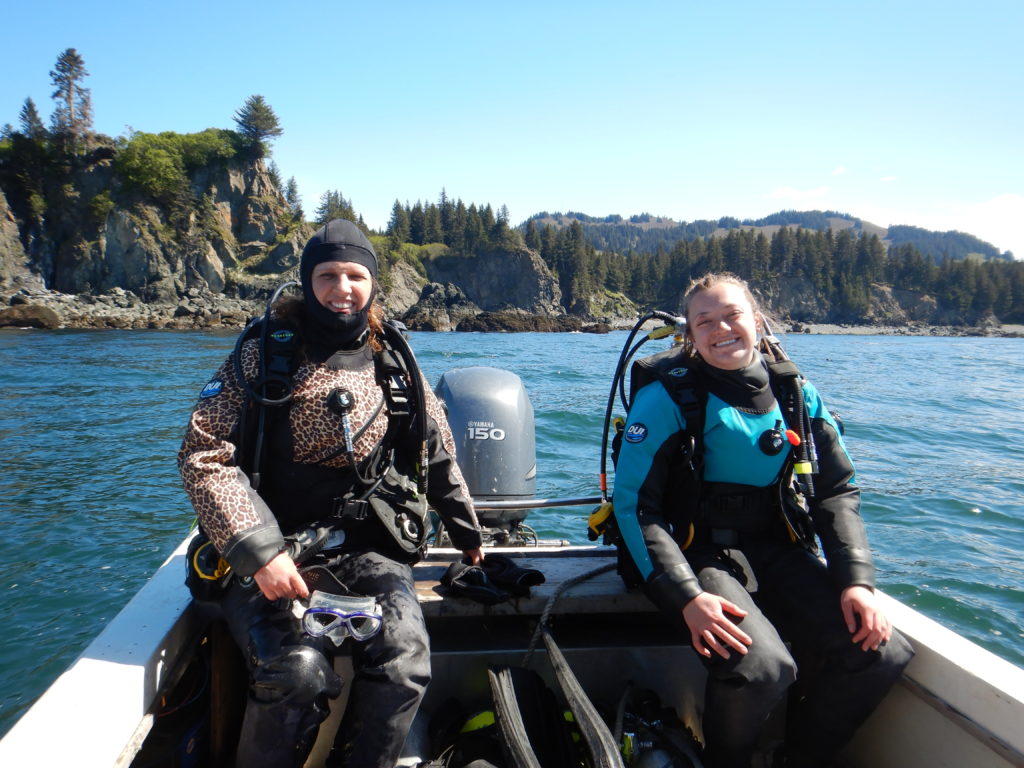
Preparing for a dive at Outside Beach near Seldovia, AK. Photo by Emily Williamson
These dives were both interesting and challenging in that sampling required being surrounded by kelp. Sampling consisted of clearing the kelp and invertebrates within 50 by 50 centimeter quadrats, which meant that we had to get to the holdfast of the kelp in order to remove it. Now I can add “how to remove a branching holdfast” and “the best way to remove a chiton” to my research diving skill set! Visibility was also a challenge that varied based on the site. At more glaciated sites, the visibility decreases due to glacial sediment entering the water.
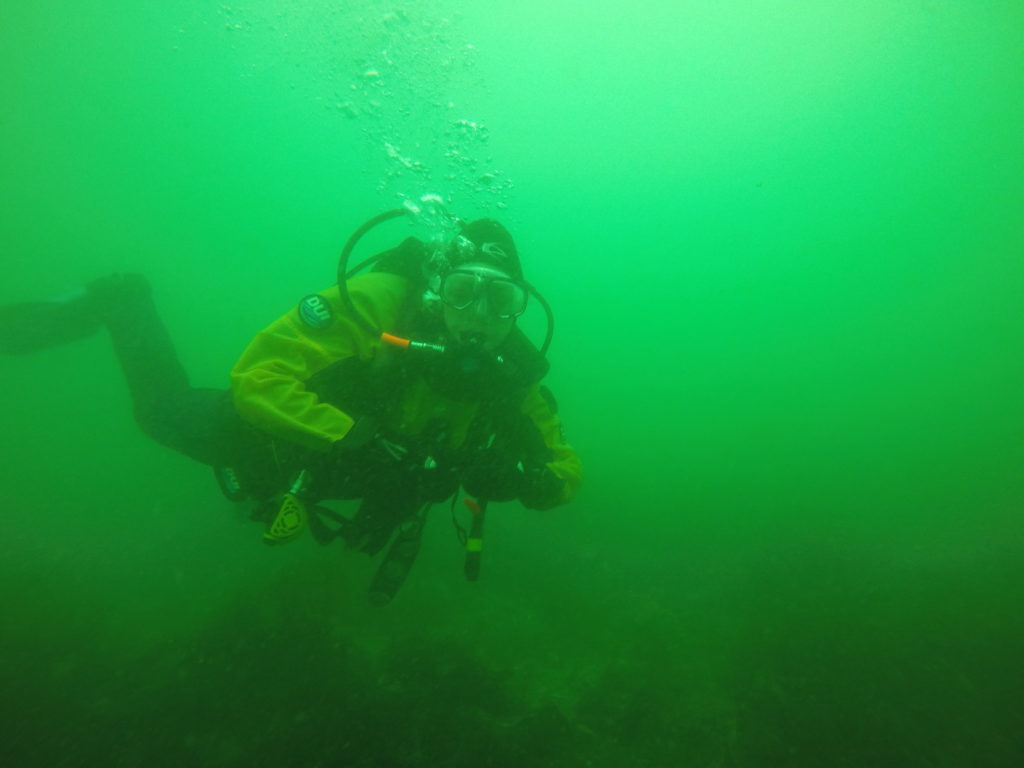
Practicing drysuit buoyancy skills before sampling. Photo by Brenda Konar
I have learned countless skills over the past few weeks and worked at sites from seagrass to under the sea. Being a part of various projects has kept me busy with field and lab work, but I always remember to take the time to soak in the beauty of working in Alaska and how much I have grown as a scientist. Each and every site I have been to have been incredibly beautiful in their own way from booming mountains to adorable baby sea stars hiding between the rocks. I find it import in life and ecology to appreciate the little things, like watching a tiny barnacle filter food from the big bad ocean. At the end of each day, I make sure to look at the sunset and take a few breaths thinking about how grateful I am to be spending this summer at the Kasitsna Bay Lab. Thank you to OWUSS and Brenda Konar for giving me the opportunity of a lifetime!
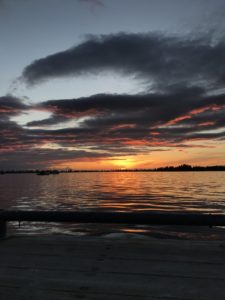
One of many amazing sunsets around 11pm. So much daylight!
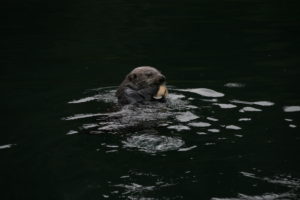
The resident otter in Kasitsna Bay snacking on a clam. Photo by Emily Williamson

